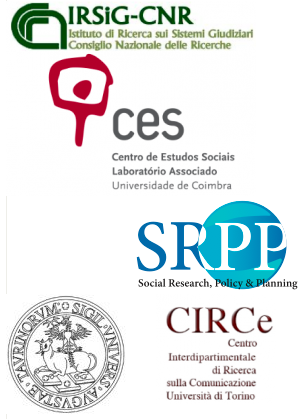
Technologies of Law and Religion: Representation, Objects and Agency
Sala Veneziana, Monash Centre, Prato, Italy
13 - 15 June 2016
DRAFT PROGRAM (as at 28 April 2016)
NOTE: This program shows the titles and presenters of papers selected for the symposium. The sessions are only a tentative conceptual grouping, and times are not yet fixed. This does not represent a timetable.
Looking and the law: probe and access
Prof John Brigham, University of Massachusetts, Amherst: Beyond “Before the Law”: Full Body Scanners and the Quaintness of Kafka’s Critique
Carlo Botrugno, University of Bologna: ‘Le Roi est mort! Vive le Roi!’ - Medical practice from the supremacy of the bare eye to the oblivion of the holistic approach
Prof Massimo Leone, University of Turin: Opening Up and Closing Up: the Plexus of Law and the Arts
Nature, humanity and death
Dr Jaya Vasudevan Suseela, Heidelberg University: Ecological Perspectives and Response to Ecological Challenges in Buddhism
Carlo Andrea Tassinari, University of Toulouse 2 Jean Jaurès, and Davide Puca, Fruitcom, Modena: The hidden notion of ‘environment’ behind agricultural certifications
Dr Nadirsyah Hosen, Monash University: Live Cattle Export Ban from Australia to Indonesia: how does technology impact on law and religion?
Prof Andreas Philippopoulos-Mihalopoulos, University of Westminster: Material Metaphors: Tiziano, Law and Death
Tour and on-site paper
Prof Giovan Francesco Lanzara, University of Bologna: Law, Politics and Religion in the built form of Florence
Dr Flavia Marcello, Swinburne University of Technology: Words, Space and Flesh: Law, Technology and Religion in the Annunciation Paintings of Fra Angelico, Monastero di San Marco, Florence.
Conflicts in law and religion
Dr Bonar Buffam, University of British Columbia, Okanagan: Secular Mutations: Law and the Political Regulation of Sikh Gurdwaras in British Columbia
Ian Woodcock, RMIT University, Melbourne: Assembling agonism: the Great Australian Bikini March as a technology of placing
Dr Megan Pearson, University of Winchester: The ‘mark of the beast’, technology and religious belief
Mediation and transparency through court technology
Francesco Contini, IRSIG-CNR and Giovan Francesco Lanzara, University of Bologna: Unquestionable mediations: How ICT remediates judicial procedures
Dr Stewart Fenwick, Federal Circuit Court of Australia and Australian Catholic University: Court IT and its Discontents
Dr Dina Afrianty, Australian Catholic University: The Intersection of Court Transparency and Gender Equality in Indonesian Muslim Divorce
Digital religion: the impact of technologies
Assoc Prof Ann Black, University of Queensland: Mixed Blessings: fatwas in the age of technology
Yian Sun, University of Bologna: From a view of Buddhist Semiotics Ontology to see how technology shapes law and religion in today's information society
Absence, presence and excess
Dr Juliet Brough Rogers, University of Melbourne: Ordinary Trauma – the technology of presenting the unrepresentable in the testimony of trauma survivors
Dr Eric Wilson, Monash University: Martyrology and Mass Media: the virtual reality of post-modern auto-sacrifice
Dr Patrícia Branco, CES, Coimbra: Courthouse architecture as technology: Some thoughts on form vs. functiion
Dr Richard Mohr, Social Research, Policy & Planning PL and University of Sydney, Float and Drift: How Things Work


